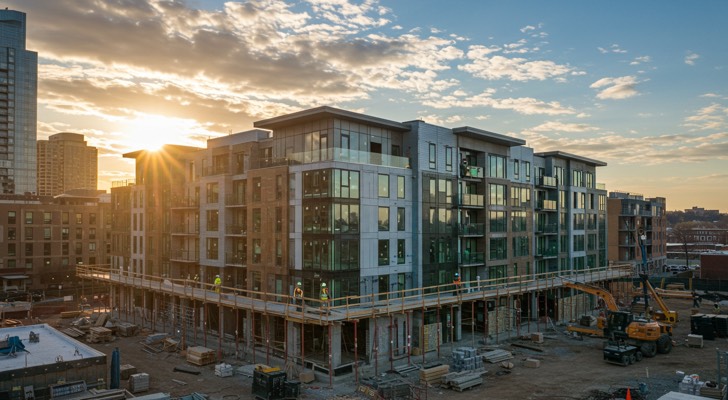A growing number of new condominium developments are expected to be ready for occupancy after 2026. These projects are gaining attention among buyers in the United States, especially those looking for a more modern, low-maintenance lifestyle. Whether you’re a first-time homebuyer, someone looking to downsize, or an investor, it’s important to understand what these condos offer, along with the pros, cons, and cost considerations.

What’s Coming in 2026 and Beyond
Cities such as Austin, Miami, Nashville, and Phoenix are leading the way with new condo construction set to open post-2026. These buildings are expected to offer energy-efficient materials and appliances, integrated smart home features, attractive shared amenities like rooftop terraces and fitness centers, enhanced security, and locations near public transportation and retail districts. Many buyers are drawn to the idea of moving into a brand-new unit that requires little to no immediate maintenance.
Pros of Living in a Condo
One major advantage of condo living is the low-maintenance lifestyle. Homeowners are not responsible for exterior upkeep, landscaping, or building repairs, which are all handled by the condo association. New condos often come with access to a variety of amenities, such as fitness centers, coworking spaces, or pools, all built into the cost of ownership. Security features like keycard access and surveillance cameras provide added peace of mind. Condos are frequently located in vibrant neighborhoods, close to shops, restaurants, and entertainment options, making them ideal for people who enjoy a more urban lifestyle. For some, condos also represent an attractive investment opportunity, particularly in growing cities with high rental demand.
Cons of Living in a Condo
Despite the benefits, condo living also has its drawbacks. Monthly homeowners association fees, commonly known as HOA fees, can be expensive and are often required even if you do not use all the amenities. Privacy is more limited, since you share walls and common areas with neighbors. Condo communities typically have rules about pets, noise, and even how you can decorate or renovate your unit. Outdoor space is usually minimal, with most units offering only small balconies. Finally, condos may not increase in value as quickly as single-family homes, and selling one can sometimes take longer due to competition within the building.
Cost of Living in a Condo
The cost of living in a condo varies depending on location, building features, and the type of unit. While the purchase price of a condo is often lower than that of a single-family home in the same area, there are recurring costs that must be considered. Your monthly housing expenses typically include a mortgage payment based on your loan terms, HOA fees which may range from around $200 to $800 per month, and utilities such as electricity and internet. Some utility services may be covered by the HOA. You will also need to purchase condo insurance, which is generally less expensive than homeowners insurance but still an essential cost. Property taxes apply based on the value of the unit and the local tax rate.
Although condos can be more affordable than houses in many urban areas, it is important to budget carefully and understand the total monthly costs. Comparing those costs with your long-term plans and lifestyle needs will help determine whether condo living is right for you.
Regional Condo Cost Examples Across the U.S.
To better understand the financial landscape of condo ownership, it helps to look at how average monthly costs compare across major U.S. cities. These estimates typically include mortgage payments, HOA fees, property taxes, and utilities for a modern two-bedroom condo.
In New York City, monthly costs can range from $5,500 to $7,500. HOA fees alone often exceed $1,500 due to premium amenities and central locations. San Francisco is similarly expensive, with costs typically falling between $5,000 and $7,000 depending on the neighborhood and building age.
Los Angeles offers more variation, with many two-bedroom units averaging between $4,000 and $6,000 per month, especially in areas like Santa Monica or West Hollywood. In Miami, where resort-style amenities are common, monthly costs range from $3,000 to $4,800. Meanwhile, Chicago remains slightly more affordable, with average costs from $2,400 to $3,600 for centrally located units.
Heading south, Austin has seen rapid growth. Condos there now average between $2,800 and $4,000 per month. Phoenix continues to attract retirees with pricing around $2,200 to $3,500. Charlotte offers affordability and charm with costs from $2,000 to $3,200.
In the Pacific Northwest, Seattle condos range from $3,500 to $5,000 monthly depending on location and views. In Denver, expect to pay between $2,800 and $4,200. Atlanta offers some of the best value among major metros, with prices typically from $2,200 to $3,400.
Further east, Boston remains on the higher end, with monthly totals usually between $4,500 and $6,500. Washington, D.C. tends to hover in the $4,000 to $6,000 range for well-located properties. In Philadelphia, prices usually fall between $2,800 and $4,200, balancing urban convenience with a slightly lower cost of living.
These figures can vary significantly depending on building amenities, floor level, neighborhood, and overall demand. It is essential to research local real estate markets carefully and evaluate total monthly expenses rather than only purchase prices when determining if a condo in a particular city aligns with your lifestyle and financial plans.
Final Thoughts
Condos expected to become available after 2026 offer a unique opportunity for those who prioritize convenience, community amenities, and lower maintenance living. They may not be ideal for everyone, especially those seeking more space or privacy, but for many Americans, they represent a smart and flexible housing choice in a changing market.
 © Copyright 2025 Shirabe-ru | Terms | Privacy Policy | Contact Us
© Copyright 2025 Shirabe-ru | Terms | Privacy Policy | Contact Us

